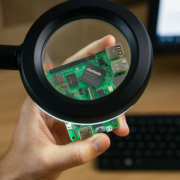What Are Dev Boards?
Introduction: The Backbone of Hardware Prototyping
In the world of electronics and embedded systems, speed, flexibility, and adaptability are key to innovation. Whether you’re building a smart home product, a robot, or an IoT device, you need a platform to test, prototype, and refine your design. That’s where dev boards, short for development boards, come into play. These compact but powerful tools are essential for engineers, makers, and developers alike.
What Are Dev Boards?
A dev board is a small, standalone circuit board that includes a microcontroller or processor and essential components for programming and prototyping. Think of it as the bridge between an idea and a finished product.
Development boards provide access to I/O pins, communication protocols, power management, and often include USB interfaces, sensors, Wi-Fi/Bluetooth chips, and display connectors. They allow developers to write, test, and debug code while interacting with hardware.
Key Features of Dev Boards
-
Processor or Microcontroller Unit (MCU/MPU)
The core of a dev board, responsible for executing code. Examples include ARM Cortex, ESP32, or Raspberry Pi’s Broadcom chips. -
Connectivity Options
Many dev boards offer Wi-Fi, Bluetooth, Ethernet, LoRa, or Zigbee connectivity, crucial for IoT and smart home applications. -
I/O Pins
These allow you to connect sensors, motors, relays, displays, and other peripherals. -
Onboard Peripherals
Some dev boards come with built-in sensors, cameras, touchscreens, or audio modules, reducing the need for external components. -
Programming Interface
Typically programmable via USB, UART, or JTAG, often supported by open-source tools like Arduino IDE, PlatformIO, or Python-based environments.
Common Types of Development Boards
| Type | Description |
|---|---|
| Arduino Boards | MCU-based boards for beginners; great for DIY electronics and automation. |
| Raspberry Pi | Full Linux-based SBC with HDMI, USB, and GPIOs—perfect for multimedia and computing. |
| ESP32/ESP8266 | Wi-Fi-enabled boards widely used in IoT applications. |
| STM32 Dev Boards | Used in industrial and commercial systems requiring real-time performance. |
| BeagleBone | Powerful ARM boards used for robotics and heavy I/O tasks. |
| PortPi by Portworld | Compact Android/Linux-based board ideal for smart control panel integration. |
Where Are Dev Boards Used?
Development boards are used across various industries and applications:
- Smart Home Devices: Lighting, control panels, automation hubs.
- Robotics: Motion control, obstacle detection, and AI integration.
- Wearable Tech: Health monitoring devices, fitness trackers.
- Industrial Automation: Sensor gateways, PLC replacements.
- Education: Teaching programming, electronics, and embedded system design.
Portworld’s Dev Board Solution: PortPi
Portworld offers the PortPi 3A development board, designed for modern embedded applications that demand high performance and flexibility. Built on Android/Linux platforms, PortPi supports rich I/O, RS485, RS232, Wi-Fi, Bluetooth, and CAN interfaces—making it ideal for smart home control panels, HMI devices, and customized automation solutions.
Highlights of PortPi 3A:
- Quad-core ARM Cortex-A7 processor
- Android/Linux dual OS support
- 7″ display interface support
- Multiple UARTs, USBs, and GPIO
- CKD/SKD assembly support for cost optimization
With its open SDK and support for OEM/ODM customization, PortPi is a go-to choice for developers building smart control solutions.
Why Dev Boards Matter for Innovation
- Rapid Prototyping: Go from idea to working model in days.
- Cost Efficiency: Avoid high upfront hardware costs.
- Customization: Tailor firmware, hardware, and peripherals to suit the project.
- Community Support: Most boards come with large developer communities and documentation.
- Scalability: Many dev boards serve as the starting point for mass production PCBA designs.







